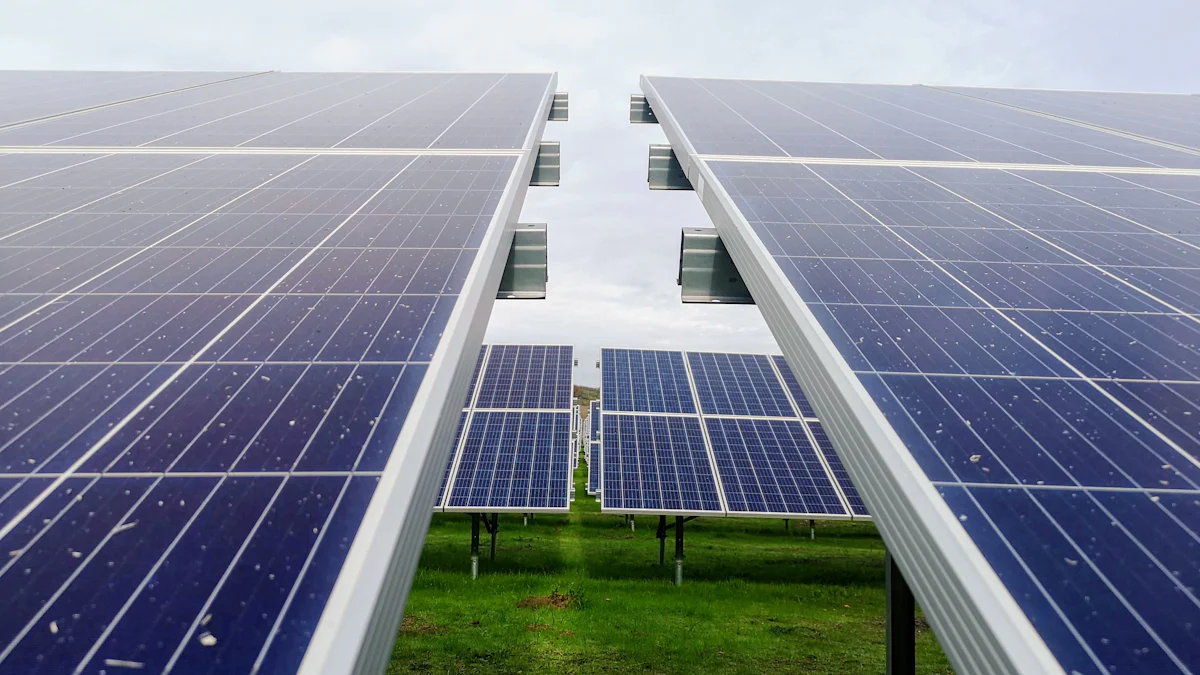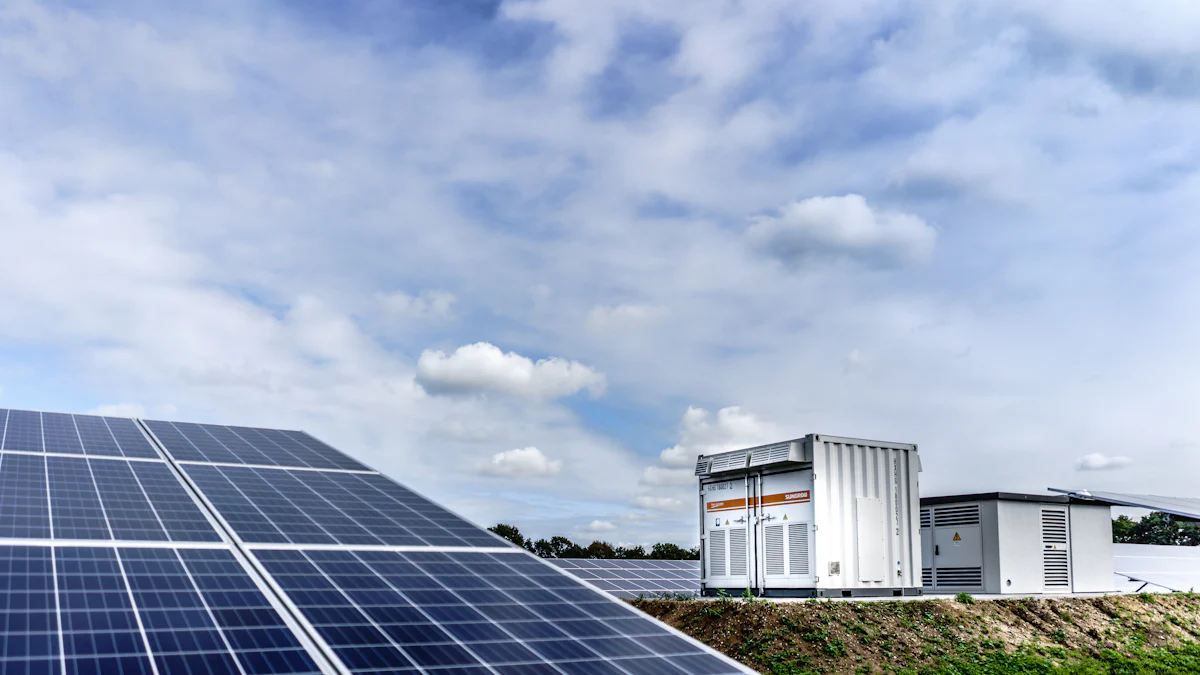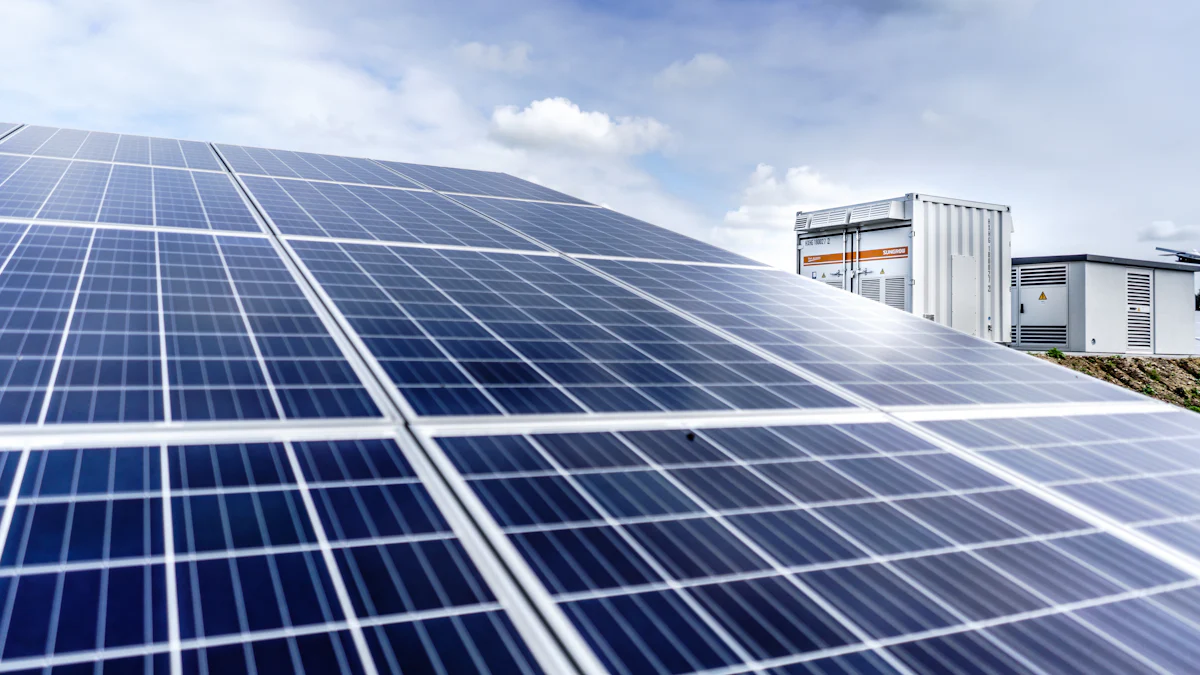

When it comes to managing solar energy, you’ve got two main options: hybrid inverters and PV inverters. Hybrid inverters do more than just convert solar power—they also manage battery storage, giving you flexibility and energy independence. On the other hand, PV inverters stick to the basics, converting solar energy for immediate use or sending it to the grid.
Brands like Megarevo are pushing hybrid inverter technology to the next level. They’re integrating smart home compatibility and next-gen batteries into their energy storage solutions. These advancements make hybrid inverters a game-changer for anyone looking to optimize their energy storage system.
Hybrid inverters save extra solar power to use later, like at night or during power outages.
PV inverters are simpler and cheaper, great for basic solar systems without batteries.
Picking a hybrid inverter can save money on bills and make your home worth more.
Think about your energy plans and future needs when choosing between hybrid and PV inverters.

A hybrid inverter is like the multitool of solar energy systems. It combines the functions of a solar inverter and a battery inverter, making it a versatile choice for managing energy. With a hybrid inverter, you can convert the DC electricity from your solar panels into AC power for your home while also storing excess energy in batteries for later use. This means you’re not just using solar power during the day—you can tap into it at night or during power outages too.
Hybrid inverters work by juggling multiple tasks at once. They convert solar energy into usable electricity, charge your batteries, and manage the flow of power between your home, the grid, and your energy storage system. For example, during the day, they prioritize powering your home with solar energy. Any extra energy gets stored in the batteries. If the batteries are full, the inverter sends the surplus to the grid. At night or during a blackout, it switches to battery power to keep your home running.
Hybrid inverters come packed with features that make them stand out. Here’s what you can expect:
Energy storage management: They store excess solar energy for later use, giving you more control over your power supply.
Backup power: Unlike traditional inverters, hybrid inverters provide electricity during grid failures.
Smart monitoring: Many models include apps or dashboards to track your energy usage and system performance.
Grid interaction: They can import and export electricity, making them ideal for both on-grid and off-grid setups.
A PV inverter, also known as a solar inverter, is the backbone of any solar power system. Its main job is to convert the DC electricity generated by your solar panels into AC power that your home or business can use. While it doesn’t manage energy storage like a hybrid inverter, it’s a reliable and cost-effective option for grid-tied systems.
PV inverters are straightforward. They take the DC electricity from your solar panels and convert it into AC power. This AC power is what your appliances and devices use. If your solar panels produce more energy than you need, the inverter sends the excess to the grid. However, PV inverters don’t store energy, so you’ll rely on the grid when the sun isn’t shining.
PV inverters focus on simplicity and efficiency. Here are their key features:
Solar power conversion: They efficiently convert DC to AC power for immediate use.
Grid-tied operation: They work seamlessly with the grid, sending excess energy back and drawing power when needed.
Low maintenance: With fewer components than hybrid inverters, they’re easier to maintain.
PV inverters are widely used across various industries. Here are some common applications:
Solar power systems for homes and businesses.
Powering household appliances in remote areas.
Solar street lights and outdoor lighting.
Solar-powered transportation like RVs and boats.
Wind power systems and electric vehicles.
While PV inverters are great for basic solar setups, hybrid inverters offer more flexibility and functionality, especially if you’re looking to store energy or go off-grid.

Hybrid inverters shine when it comes to flexibility. They can work seamlessly with or without a grid connection. This means you can keep your home powered even during outages. By storing energy in batteries, hybrid inverters ensure you have a backup supply when the grid goes down. They also optimize power flow, letting you use stored energy during peak hours when electricity costs more. This independence makes hybrid inverters a great choice if you want to reduce reliance on the utility grid.
PV inverters, often called traditional inverters, depend entirely on the grid. They convert solar energy into usable electricity and send any excess back to the grid. However, they shut down during outages due to safety features like anti-islanding protection. This limitation means you’ll need the grid to keep your home running, even if your solar panels are generating power. While PV inverters are reliable for basic setups, they lack the resilience of hybrid systems.
Hybrid inverters take energy management to the next level by integrating battery storage. They store excess solar energy during the day, so you can use it at night or during blackouts. This feature not only reduces waste but also lowers your energy bills. Hybrid inverters also allow you to charge batteries using the grid, giving you more options to maintain a consistent power supply. If energy independence is your goal, hybrid inverters are the way to go.
PV inverters don’t offer much in terms of battery integration. They focus solely on converting solar energy for immediate use or grid export. This simplicity makes them cost-effective, but it also limits their functionality. If you’re considering adding batteries to your system later, you might face compatibility issues. PV inverters are best suited for setups where energy storage isn’t a priority.
Hybrid inverters excel at managing power. They store surplus solar energy in batteries, ensuring nothing goes to waste. This stored energy can power your home during peak hours, outages, or at night. Hybrid inverters also let you sell excess energy back to the grid, maximizing your system’s efficiency. Their advanced energy management features make them ideal for anyone looking to optimize their solar setup.
PV inverters handle power differently. They send any unused solar energy directly to the grid. While this can help offset your electricity bill, it doesn’t give you the same level of control as a hybrid system. PV inverters are straightforward and efficient, but they lack the ability to store energy for later use. If you’re okay relying on the grid, a PV inverter might meet your needs.
Pro Tip: If you’re planning for future energy storage or want backup power during outages, hybrid inverters offer more flexibility and long-term benefits.
When it comes to upfront costs, hybrid inverters tend to be pricier than traditional inverters. In contrast, solar PV inverters typically account for only 6% to 9% of the total system cost, making them a more budget-friendly option for initial investments.
The installation process also differs. Hybrid inverters require more complex setups due to their integration with batteries and advanced energy management systems. This complexity can increase labor costs. On the other hand, traditional inverters are simpler to install, which helps keep installation expenses lower.
If you're looking for a cost-effective solution for a basic solar setup, a PV inverter might be the way to go. But if you're aiming for long-term energy independence, the higher upfront cost of a hybrid inverter could be worth it.
Hybrid inverters shine when it comes to long-term savings. By generating and storing your own power, you reduce your reliance on the grid, which lowers your monthly electricity bills. Plus, many regions offer incentives for adopting renewable energy, adding to your savings.
Investing in a hybrid inverter can also boost your property's value. Homes with energy-efficient systems are more attractive to buyers, thanks to their lower environmental impact and reduced utility costs. Hybrid inverters maximize the return on your solar investment by ensuring you use as much solar power as possible.
Traditional inverters, while cheaper upfront, don't offer the same level of savings. They rely on immediate solar generation or grid supply, which can lead to higher long-term costs. If you're thinking about the bigger picture, hybrid inverters provide a more reliable and eco-friendly energy solution.
Hybrid inverters take energy efficiency to the next level. They store excess power generated during peak solar hours, so you can use it later when the sun isn't shining. This reduces energy waste and ensures you're getting the most out of your solar inverter system.
Unlike traditional inverters, hybrid models manage both energy conversion and battery charging. This dual functionality optimizes energy usage and enhances overall efficiency. Traditional inverters, by comparison, send surplus electricity back to the grid, often at a lower compensation rate. This can limit their efficiency, especially if you're aiming to maximize your solar power usage.
In grid-tied systems, hybrid inverters offer unmatched versatility. They can feed energy into the grid while also providing backup power during outages. Their advanced energy management systems ensure a seamless transition between solar, battery, and grid power.
Traditional inverters, while reliable, lack this flexibility. They depend entirely on the grid and shut down during outages for safety reasons. If you're looking for a system that performs well in both grid-tied and off-grid scenarios, hybrid inverters are the clear winner.
Choosing between a hybrid inverter and a PV inverter depends on what you need from your solar system. If you want energy independence, flexibility, and backup power during outages, a hybrid inverter is the way to go. It stores extra solar energy, reduces waste, and keeps your home running even when the grid is down.
On the other hand, PV inverters are perfect for simplicity and cost-effectiveness. They work well for basic setups where energy storage isn’t a priority.
When deciding, think about a few key factors:
Does the inverter match your solar panels and batteries?
Will your system be grid-tied or off-grid?
Do you need advanced monitoring features?
How does the upfront cost compare to the long-term value?
If your goal is to maximize energy efficiency, reduce grid reliance, and future-proof your system, hybrid inverters like Megarevo’s solutions are a smart investment.
Hybrid inverters manage both solar energy conversion and battery storage. PV inverters only convert solar energy for immediate use or grid export. If you want energy independence and backup power, hybrid inverters are the better choice. PV inverters work well for simpler, grid-tied systems.
Yes, but it’s not always simple. Upgrading often requires additional components and rewiring. If you’re considering energy storage in the future, starting with a hybrid inverter saves time and money. It’s a more future-proof option for expanding your solar system.
Absolutely, if energy independence matters to you. Hybrid inverters reduce reliance on the grid, lower electricity bills, and provide backup power during outages. Over time, the savings and flexibility they offer outweigh the initial investment. They’re especially valuable in areas with unreliable grids.
Yes, that’s one of their biggest advantages! Hybrid inverters use stored battery energy to keep your home running during outages. PV inverters, on the other hand, shut down for safety reasons. If blackout protection is a priority, hybrid inverters are the way to go.
Think about your energy goals. Do you want backup power? Are you planning to add batteries later? Hybrid inverters offer flexibility and long-term benefits. If you’re looking for a simple, cost-effective solution for a grid-tied system, a PV inverter might be enough.
Tip: Always check compatibility with your solar panels and batteries before buying an inverter.